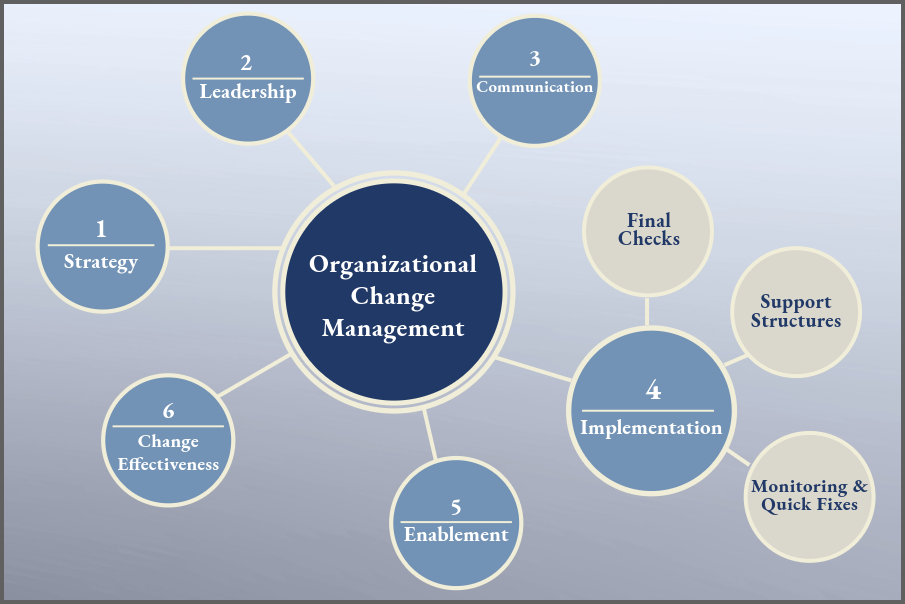Organizational Change Management Consultant Alaina Mazurkiewicz continues her OCM blog series:
Implementing change in an SAP project is a complex, yet critical, phase that involves transitioning from the planning and preparation stages to the actual execution of the new systems and processes. In the context of SAP Organizational Change Management (OCM), change implementation is the point where strategies become tangible actions, and the organization begins to experience real transformation. This blog post explores the unique aspects of change implementation using SAP OCM methodology.

Setting the Stage for Change Implementation
Change implementation in SAP OCM involves a series of coordinated actions designed to ensure that the technical deployment of SAP solutions aligns perfectly with the human aspects of change. These items are collectively referred to as Business Readiness. Business Readiness can be defined as the capacity of an organization to anticipate and respond to its changing environment.
The goal is to facilitate a smooth transition that minimizes disruptions to business operations while maximizing user adoption and proficiency.
1. Preparation: Before the actual implementation, it’s crucial to ensure that all foundational elements are in place. This includes finalizing the design and setup of the SAP system, ensuring all hardware and software components are ready, and confirming that data migration strategies are set to go. Equally important is ensuring that all stakeholders are aware of the timeline and have clear expectations about their roles during this phase.
2. User Training: An essential component of the change implementation phase is training end users. By this stage, training materials should be tailored to the specific needs of different user groups, focusing on hands-on, practical training that builds confidence and competence in the new system. Training should be continuous, with support structures in place to help users adjust to the new system after going live.
3. Testing: Rigorous testing of the SAP system is critical to ensure all features and functions perform as expected before going live. This includes unit testing, integration testing, and user acceptance testing (UAT) with real-world scenarios to ensure the system meets the business needs.

The Go-Live Strategy
The go-live phase is the most critical in the change implementation process. It’s the moment when the SAP system becomes fully operational.
- Final Checks: Conduct final checks and ensure that all data migration has been completed accurately. This stage often involves a blackout period during which the old systems are turned off and the new SAP system is initialized.
- Support Structures: Establish strong support structures such as a help desk or user support teams that are readily accessible to handle any questions or issues that arise immediately after go-live. These teams should be equipped to provide immediate solutions to keep the business running smoothly.
- Monitoring and Quick Fixes: Close monitoring of the system’s performance from the outset is crucial. Be prepared to make quick fixes for any unexpected issues. Having IT specialists and SAP consultants on hand during this phase can help address these challenges swiftly.
Change implementation using SAP OCM methodology is an intensive phase of any SAP project. It requires meticulous preparation, robust training, and strong support systems to ensure a successful transition. By focusing on these critical areas, organizations can achieve a smooth implementation that minimizes disruption and sets the stage for long-term success in the new SAP environment.
We’ve got two more posts in our OCM blog series, in which we’ll cover enablement and change effectiveness. If you have questions about Organizational Change Management or need help finding OCM solutions for your business, be sure to reach out reach out via email or LinkedIn.
Follow these link to other posts in our OCM blog series:
Change Management Strategy: OCM Blog Series, Part I
Effective Change Leadership: OCM Blog Series, Part II
Effective Change Communication: OCM Blog Series, Part III




